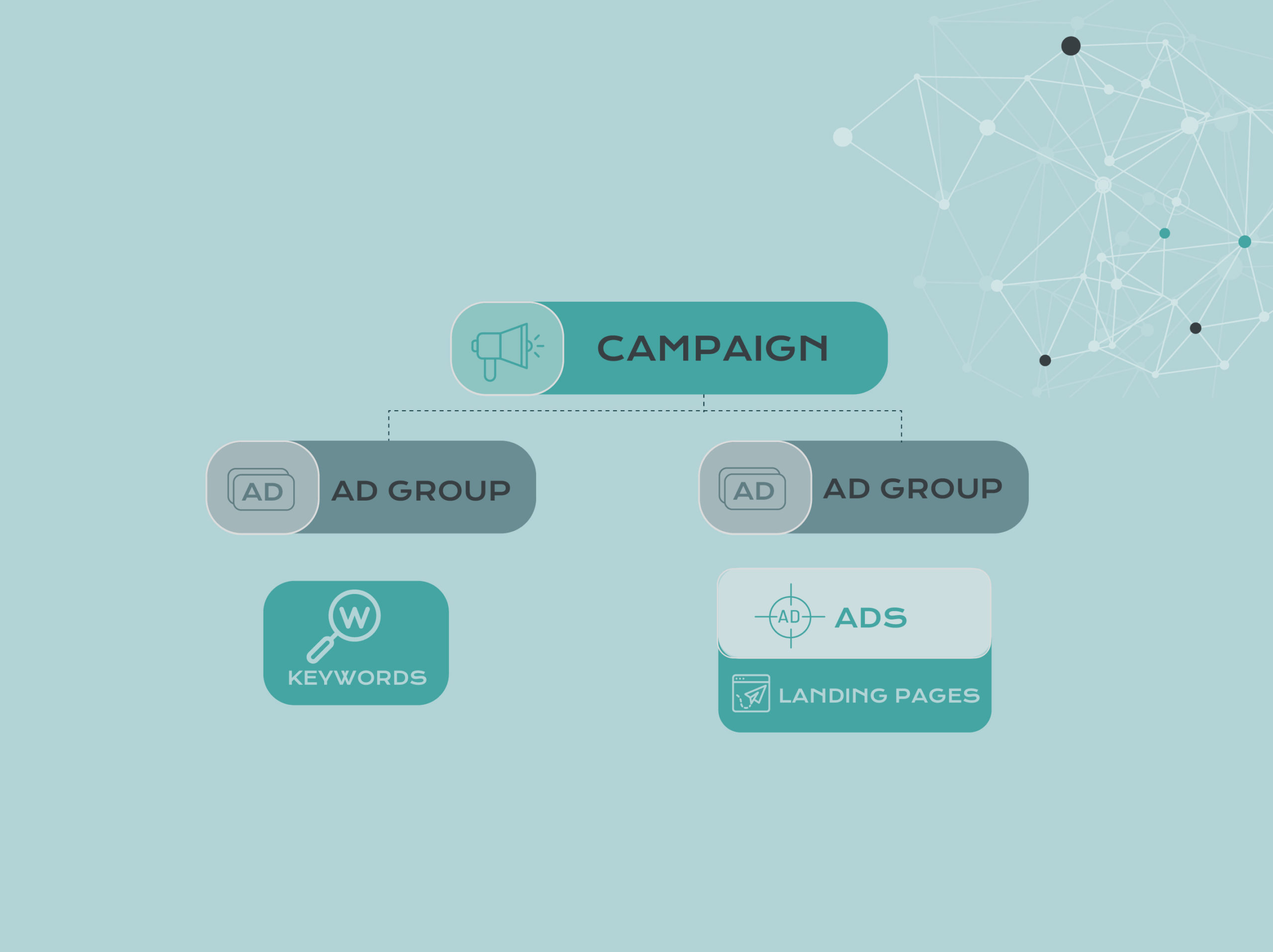Marketing experts have long thought that the SKAG was the gold standard in setting up your PPC campaign, and in most cases they were right. SKAGs (Single keyword adgroup structure) are just that, each keyword in your campaign has its own dedicated ad group and by extension, its own dedicated ad copy specific to the kayword.
This structure has historically shown to give more relevance to your PPC campaigns because your ad group, ads, and keyword will be specifically focused on one specific keyword or search term.
Here is an example of what a SKAG campaign structure looks like:

Pair the SKAG structure with matching your keyword, ad copy, and your content on dedicated landing pages and you’re guaranteed a higher quality score and overall lower CPCs. Sounds like an easy win for the SKAG, right?
While the SKAG was long our top pick for Google campaigns at Premier, updates to the Google platform have in some ways diluted the effectiveness of the SKAG. The primary change being the inclusion of close variants to be matched with exact match keywords. What this means is that Google now focuses more on the intent of the user rather than the exact search query (thanks a lot, Google). SKAGs are meant to create an exact match between the specific keywords and the user search queries. With the inclusion of close variants, Google can really match anything that falls under the user intent with an exact match keyword. This means that all your work crafting ad copy centered around a specific keyword in a single keyword ad group may wind up matching with a search term that falls in the same intent perhaps, but not an exact match to the keyword you’re bidding on.
Close variants also made it more difficult to effectively layer in negative keywords that would mitigate irrelevant traffic that would increase click costs but wouldn’t actually turn into leads. This is because Google has placed a cap of 10,000 negatives that can be added to a single search campaign. Over the life of a Google ads account, experienced search managers should be adding in negative keywords routinely at an account, campaign, and ad group level. Having a SKAG structure with a cap of 10k negatives will limit your ability to keyword funnel which was a huge benefit of the single keyword ad group.
Introducing the STAG – The Single Theme Ad Group
STAG (Single Theme Ad Group) is very similar to SKAGs but instead of the keyword, themes are used to organize the campaign. In contrast to the SKAG, single theme ad groups have 3-5 keywords in an ad group all centered around a similar theme or base keyword modifier (eg. services, products, practices, locations, inventory, etc). Since all the keywords in your ad groups are going to be based on the same recurring theme, utilizing the STAG campaign structure allows you to still maintain a high level of control and ad relevance.

Why would the STAG structure be a good fit for your Google ads account?
In the single theme ad group, greater emphasis is placed on the user intent rather than syntax. The biggest benefit to this structure is being able to craft an ad copy that is centered around this specific theme as opposed to just a single search term. A STAG structure makes it easier to run effective split tests on your ad copy to improve your ad groups. A better ad group will get you to better CTRs, which improves Quality Score, and ultimately results in lower CPCs.
Utilizing single theme ad groups are also hugely beneficial in the way that it gives the account manager far more control over their account. With SKAGs when you have 500 keywords in 500 separate ad groups it can be very difficult to analyze your account, optimize ad copy, and run effective split tests. Grouping your keywords into ad groups by theme in a STAG, you could have 500 keywords in only 50 ad groups to manage. This will make your efforts to optimize ad copy and landing pages have a much further reach then if you were only optimizing to a single keyword.
Other benefits of STAG are:
- Easier to manage
- Your ad changes go further
- Greater ability to split test ad copy
- Improved bid management capabilities
- Increased impression data
- Reduced KW/Campaign competition
There are, however, several use cases for a SKAG campaign structure. Specifically in cases where you have a keyword that is cannibalizing a campaign budget so you’ll want to separate it in order to hyper focus the ad copy for that keyword and also control its budget allocation.
At Premier we encourage a hybrid model of SKAG and STAG campaigns depending on the account budget as well as the product, or service. Keywords that generate the most impressions will have the greatest impact on your overall quality score. We recommend putting these keywords in a single keyword ad group (SKAG) where you can control and allocate the budget where it will have the best performance.
At the end of the day, there are valid arguments for the use of the single keyword or single theme ad group structures or at times a hybrid of the two depending on the product or service. The most important key regardless of which strategy you use is to ensure you have a process in place for analyzing the data, checking search term reports, adding negatives, and optimizing your ad copy.
If you need help optimizing or managing your Google campaigns, drop us a line today! We would love to work with you.
